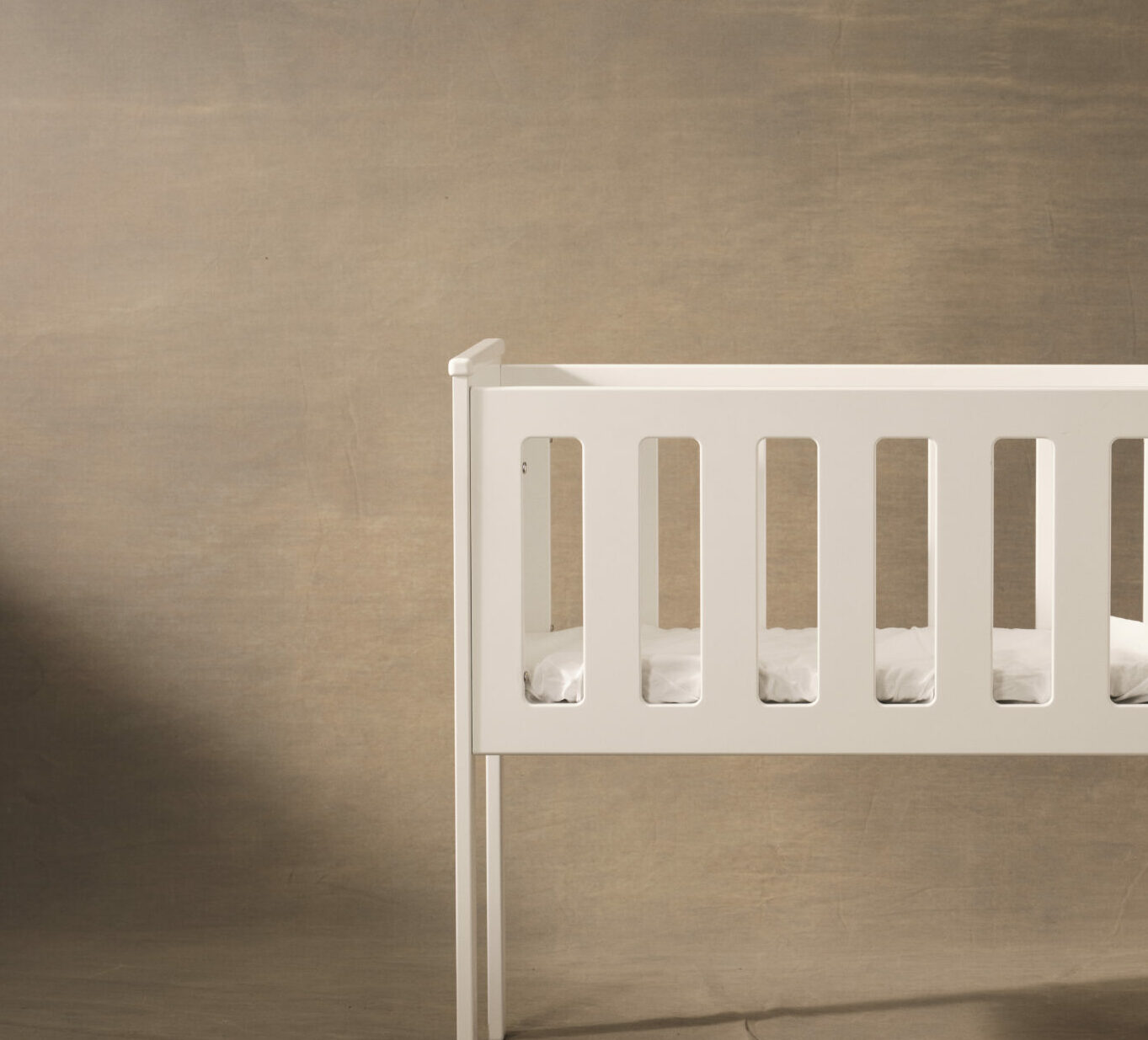Most babies learn to sleep on their own when they’re around 4 to 6 months of age. This timing is crucial as it coincides with the maturation of their circadian rhythms, the natural internal process that regulates the sleep-wake cycle, and their ability to sleep for longer stretches.
The journey of parenthood is filled with numerous milestones, one of which is when babies learn to sleep through the night on their own. This development is eagerly anticipated by many parents, as it signifies not only a significant growth milestone for their baby but also a return to more restful nights for themselves.
Your baby’s sleep timeline
Understanding your baby’s sleep timeline can provide valuable insights into their development and help manage expectations. In the first few months, babies have short sleep cycles and wake frequently to feed. As they grow, these cycles lengthen, allowing for longer periods of sleep.
By the time they reach 3 to 4 months old, many babies can sleep for stretches of five to six hours at night. However, it’s around the 4 to 6 month mark that the possibility of sleeping through the night becomes more realistic, as their digestive systems are better able to handle longer periods without feeding, and they’re developmentally ready to start learning sleep skills.
- Birth to 2 months: Newborns don’t have a sense of night and day. They sleep in short bursts of two to four hours through the 24-hour day, waking primarily for feedings.
- 2 to 3 months: You might start noticing the first signs of your baby sleeping for longer stretches at night, though frequent wake-ups for feeding are still common.
- 3 to 4 months: Many babies begin to sleep for five to six-hour stretches at night. This change is partly because they start to produce more melatonin, which helps regulate sleep cycles. It is important to note here, that your little one may go through a ‘4 month sleep regression’ at the 4 month mark, they are developing significantly at this point and may lead to some disruptions in their sleep for a period of time.
- 4 to 6 months: This is a crucial time for establishing healthy sleep habits and routines. Babies are now developmentally capable of sleeping through the night without needing to feed every few hours, however, if your little one is waking to feed, perhaps up to two times, this is normal behaviour.
- Beyond 6 months: As babies grow, their need for night feedings decreases, and their ability to sleep for longer periods at night increases. Continuing to maintain a consistent bedtime routine is key to supporting healthy sleep habits.
The secret to helping your baby sleep on their own
Sleep training newborns:
Sleep training is a process that can help teach babies to fall asleep on their own and return to sleep if they wake up during the night, often involving the use of a comfortable and safe baby cot. It’s not about forcing a baby to sleep but rather about creating an environment and establishing routines that encourage self-soothing and independent sleep. This involves consistent bedtime routines, understanding sleep cues, offering appropriate wake windows, using a baby cot effectively as part of the sleep training environment, and gradually reducing parental intervention as the baby learns to settle themselves.
When to sleep train a newborn?
Starting sleep training can seem daunting, but with patience and consistency, success is achievable. Begin with establishing a bedtime routine that is calming and predictable. This might include a bath, a book, and some quiet cuddle time. Pay attention to your baby’s sleep cues to avoid over-tiredness, as an overtired baby has a harder time falling asleep. During the process, it’s important to lay your baby down drowsy but awake, so they can practice falling asleep without your help.
Before you begin sleep training, ensure your baby is at an appropriate age and that you’re ready to commit to the process. It’s often helpful to start when there are no major disruptions in your family’s routine, such as travel or moving homes. Prepare yourself mentally for a few challenging nights, and remember that consistency is key. Choose a method that you feel comfortable with and that suits your baby’s temperament and your parenting style.
Sleep Tips:
Here are some detailed tips to guide you through the sleep training baby process:
- Establish a soothing bedtime routine: Create a calm and comforting bedtime routine to signal to your baby that it’s time to wind down and prepare for sleep. This routine could include:
- A warm bath to relax their body.
- Reading a bedtime story in a soft, soothing voice to help them feel secure and loved.
- Gentle cuddling or rocking to calm them before bed.
- Playing soft, calming music or white noise in the background to create a sleep-conducive environment.
- Watch for sleep cues: Pay close attention to your baby’s signals that they’re getting sleepy. These cues might include rubbing their eyes, yawning, or becoming fussy. Catching these signs early can prevent your baby from becoming overtired, making it easier for them to fall asleep.
- Create a conducive sleep environment: Ensure your baby’s sleep environment promotes restfulness. This includes:
- Keeping the room at a comfortable temperature.
- Using blackout curtains to keep the room dark and encourage the production of melatonin, the sleep hormone.
- Ensuring the crib or sleep area is safe, with a firm mattress and no loose bedding or toys.
- Lay your baby down drowsy but awake: This step is crucial for teaching your baby to self-soothe and fall asleep independently. It involves:
- Recognising the difference between being fully asleep and drowsy. The ideal time to put your baby down is when they’re sleepy but still slightly awake.
- Avoiding rocking or feeding your baby to the point of sleep, so they don’t associate these activities with the ability to fall asleep. Important to note that there are times when you may need to do this, however, it shouldn’t be the only way your little one sleeps.
- Be patient and consistent: Consistency is key in sleep training babies. Stick to your chosen method and bedtime routine every night to help your baby understand what is expected of them. Remember:
- It’s normal for progress to be slow and for there to be setbacks. Babies are learning a new skill, and like any skill, it takes time to master.
- Support your baby through the process with comfort and reassurance, but try to avoid reverting to old habits that you’re trying to move away from, like rocking or feeding to sleep.
- Consider gentle sleep training methods: If traditional sleep training methods feel too challenging, there are gentler approaches that can be equally effective and might be suited to your family best. These might include:
- Gradually reducing your presence in the baby’s room over time (chair method).
- Offering comfort at timed intervals without picking up your baby (timed checks or Ferber method).
- Take care of yourself: Sleep training can be as exhausting for parents as it is for babies. Make sure to take care of your own well-being by getting rest when you can, seeking support from family and friends, and being patient with yourself and your baby.
The most common sleep training methods
There are several sleep training methods, each with its approach to helping babies learn to sleep independently. The “Cry-It-Out” method, or extinction, involves putting your baby to bed and not responding to their cries during the night. This method can be challenging for parents but often yields quick results.
The “Ferber” method, or graduated extinction, involves putting your baby to bed and gradually increasing the time you take to respond to their cries. The “Chair” method involves the parent sitting in a chair next to the baby’s crib and gradually moving the chair farther away from the crib over several nights. Lastly, the “No Tears” method focuses on gradually teaching the baby to sleep by offering comfort but not picking them up, encouraging a more gradual transition to independent sleep.
Understanding these methods can help parents choose the strategy that best fits their parenting style and their baby’s needs.
Here’s a breakdown of the most common sleep training methods:
- Cry-It-Out (Extinction):
- Approach: Put the baby in their crib at bedtime and do not respond to their cries during the night.
- Parental challenge: This method can be emotionally challenging for parents due to the difficulty of not responding to their baby’s cries.
- Results: Often yields quick results, with babies learning to self-soothe and sleep independently in a relatively short period.
- Ferber method (Graduated extinction):
- Approach: Put the baby to bed awake, then leave the room. If the baby cries, wait for a predetermined amount of time before checking in. The waiting period gradually increases over subsequent nights.
- Balance: Offers a balance between helping the baby learn to self-soothe and providing reassurance to the baby that the parent is nearby.
- Adaptability: Allows parents to adjust the waiting times based on what they feel is best for their baby and their own comfort level.
- Chair method:
- Approach: The parent sits in a chair next to the baby’s crib at bedtime. Each night, the parent moves the chair further away from the crib until they are out of the room.
- Gradual withdrawal: Provides a gradual transition for the baby, getting them used to falling asleep without the parent being immediately next to them.
- Parental presence: Allows the baby to be comforted by the parent’s presence without direct interaction, helping to build independent sleeping skills over time.
- No-Tears method:
- Approach: Focuses on comforting the baby to sleep without letting them cry it out. This can include patting, shushing, and offering reassuring words without picking the baby up.
- Gentle transition: Encourages a more gradual transition to independent sleep, ideal for parents who prefer to avoid or minimise crying.
- Consistency: Requires consistency and patience, as this method may take longer for the baby to learn to fall asleep independently.
Teaching your baby to sleep through the night is a significant milestone in both your baby’s development and your journey as a parent. While sleep training can be challenging, the benefits of a well-rested child and family are immeasurable.
Remember, every baby is unique, and what works for one may not work for another. Be patient, stay consistent with your little ones sleep, adjust the method as needed to suit your baby’s and your family’s needs. With time and perseverance, your baby will learn to sleep on their own, marking the beginning of many peaceful nights to come.

By Carla Cenatiempo
March 11, 2024
By Carla Cenatiempo
March 11, 2024
Carla is the Marketing Lead at Tasman Eco, she has been with the business for almost 3 years now and loves being able to work with Australian families every day. It’s really important for her to share both quality and valuable content on nursery furnitures, with families to ensure they have peace of mind when growing their family amongst all of the noise in the space. Highlighting the importance of selecting the right baby cot and bassinet as part of the nursery setup, she focuses on providing information that helps families make informed decisions for their comfort and safety.


















